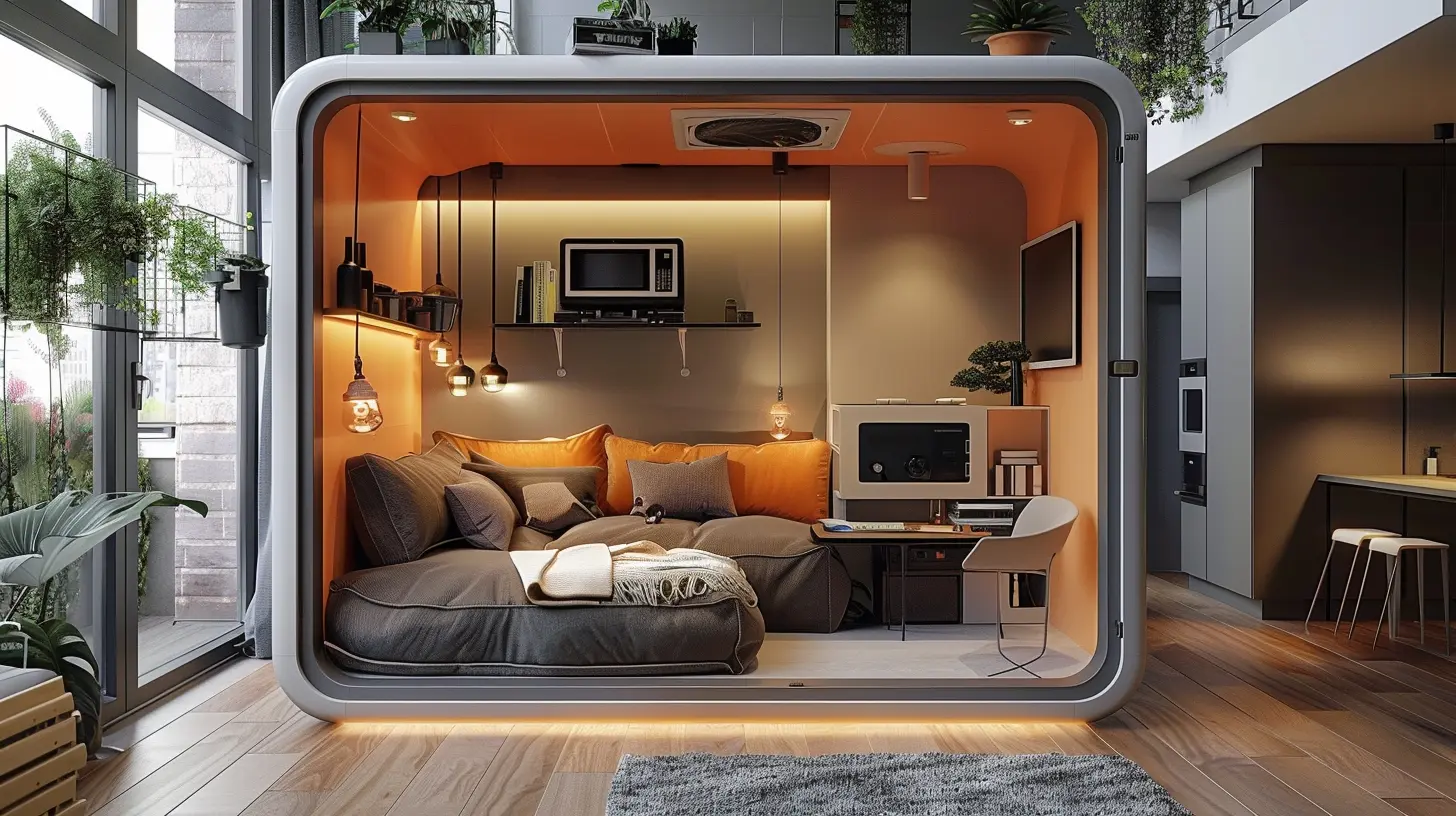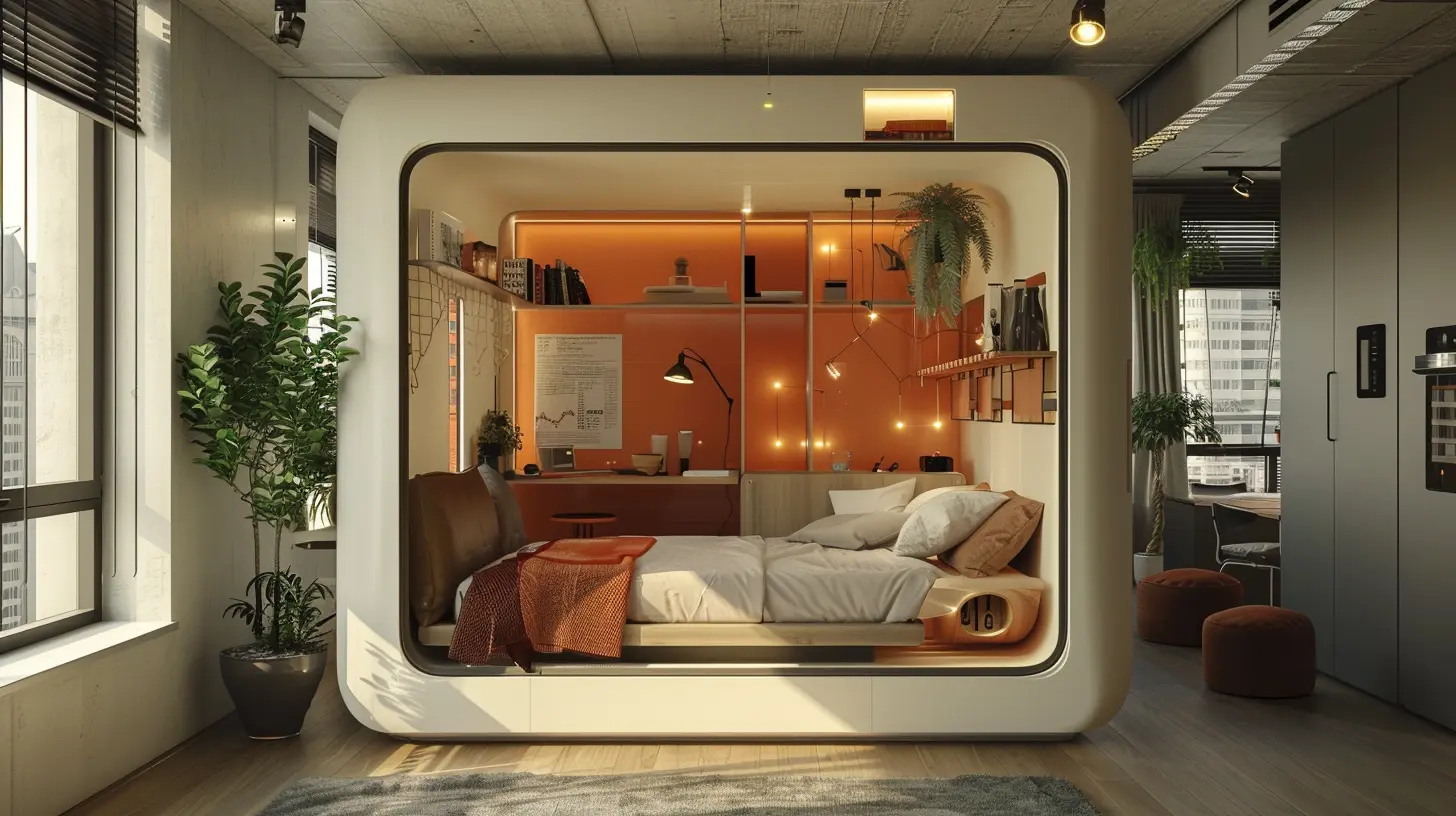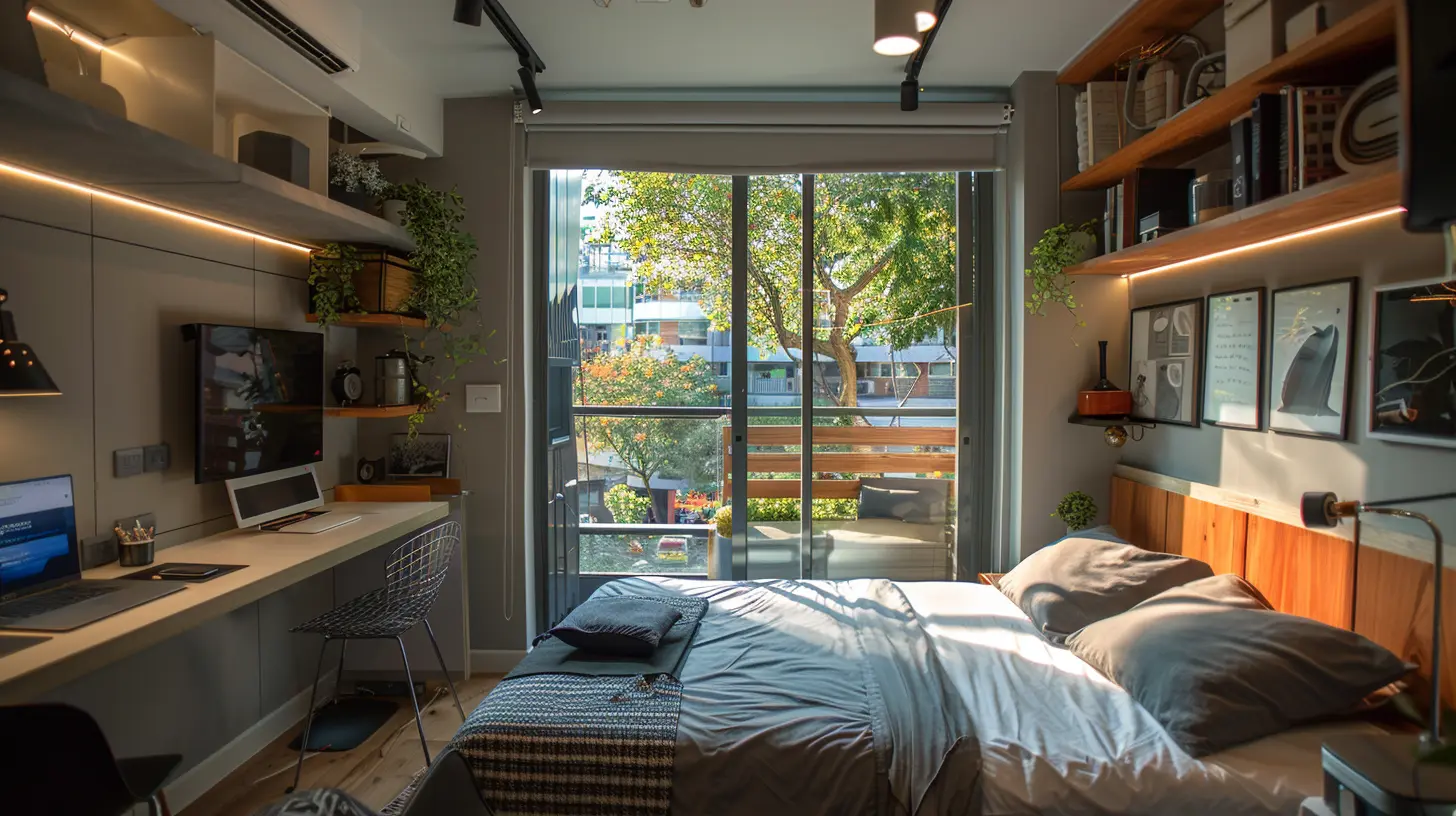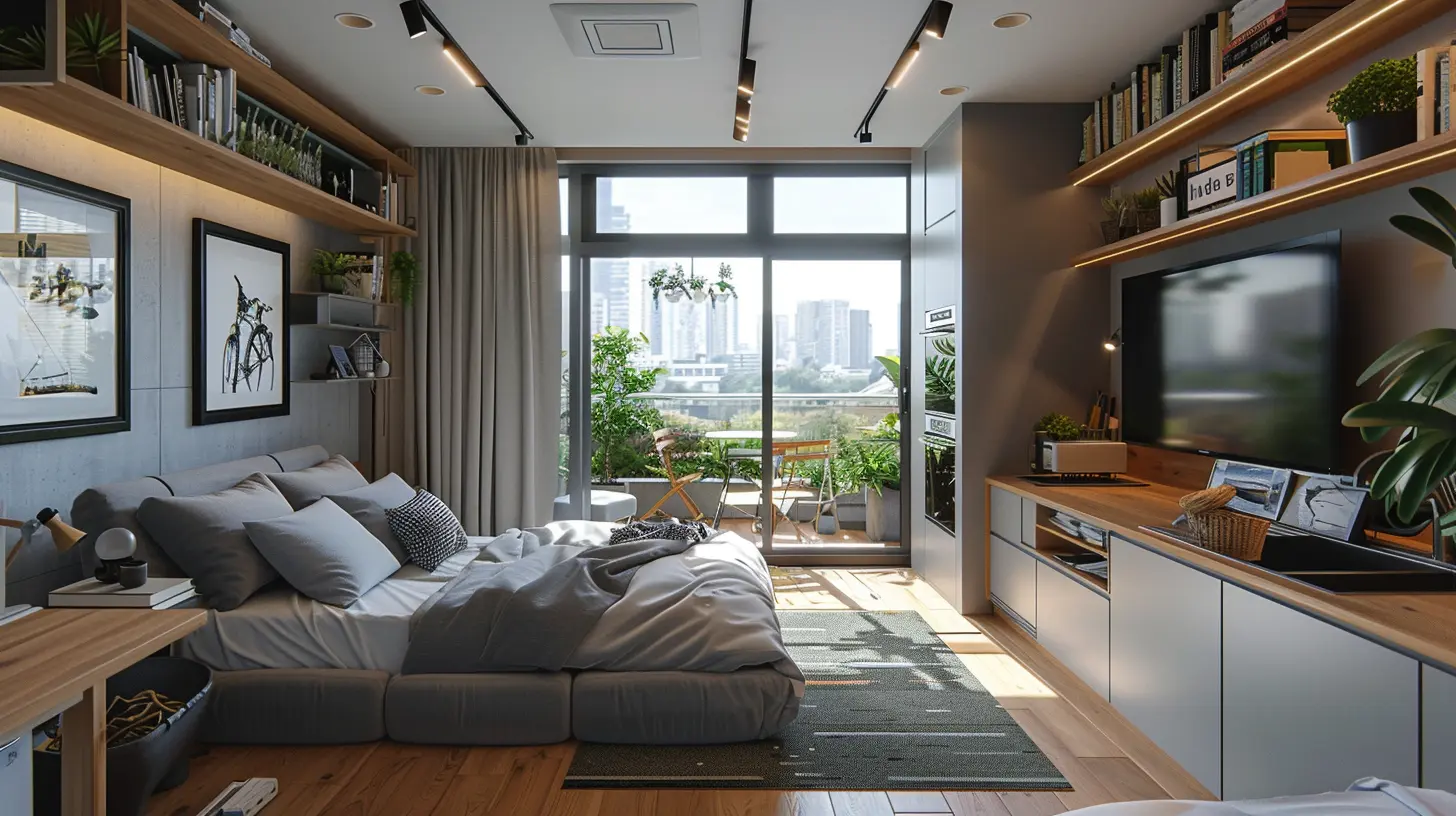The Rise of Micro-Apartments: Smart Living in Urban Spaces
15 July 2025
Urban spaces are evolving, and so is the way we live in them. Say hello to micro-apartments—the tiny living solution that's taking big cities by storm. Whether you're a young professional, a digital nomad, or simply someone who values efficiency over excess, these compact homes are redefining modern living.
But what exactly is a micro-apartment? And why are they becoming the go-to choice for city dwellers? Let's dive into the rise of micro-apartments and why they might just be the smart way to live in today’s fast-paced world.

What Are Micro-Apartments?
A micro-apartment is exactly what it sounds like—a small, self-contained living space, typically between 150 to 400 square feet. Despite their size, these apartments pack a punch, offering all the essentials: a sleeping area, a functional kitchenette, a bathroom, and often some cleverly designed storage solutions.Designed for efficiency, micro-apartments prioritize minimalism and functionality, making them ideal for those who want to live simply without sacrificing comfort.

Why Are Micro-Apartments Gaining Popularity?
Micro-apartments aren’t just a trend—they're a response to the rapid urbanization and skyrocketing housing costs in major cities. But beyond affordability, there are several reasons why people are choosing to downsize their living spaces.1. Affordability in Expensive Cities
Let’s face it—housing costs in cities like New York, San Francisco, and London are through the roof. For many, renting a traditional one-bedroom apartment is simply out of reach. Micro-apartments offer a budget-friendly alternative, allowing residents to live in prime locations without blowing their entire paycheck on rent.2. Efficient Use of Space
Bigger isn’t always better. Micro-apartments highlight how smart design can make a tiny space feel spacious. With features like foldable furniture, lofted beds, and built-in storage, these apartments maximize every square inch.Ever seen a bed that folds into the wall or a dining table that doubles as a workspace? That’s the magic of micro-living—versatility at its best.
3. A Minimalist Lifestyle
Less space means fewer things, and fewer things mean less clutter. Micro-apartment living naturally encourages a minimalist mindset, helping residents focus on experiences rather than possessions.Think about it—how much of the stuff in your current home do you actually use? Probably less than you think. Living in a micro-apartment forces you to prioritize what truly matters.
4. Sustainability and Eco-Friendly Living
Smaller spaces consume less energy. Heating, cooling, and lighting a micro-apartment require significantly fewer resources than a traditional home. As cities push for greener living solutions, micro-apartments align with the sustainability movement, reducing carbon footprints one small space at a time.5. Convenient City Living
Urban life is all about convenience. Micro-apartment buildings are often located in bustling downtown areas, close to work, restaurants, and entertainment. With city life at your doorstep, who needs a huge living space when the whole city is your playground?
How Are Micro-Apartments Designed for Comfort?
You might be thinking—sure, they sound practical, but are they actually livable? Absolutely! The secret lies in smart design and multifunctional furniture. Here's how architects and interior designers make small spaces feel big:1. Multi-Functional Furniture
- Murphy beds that fold into the wall- Sofa beds that transform into sleeping areas
- Expandable dining tables that tuck away when not in use
2. Vertical Space Maximization
- Lofted sleeping spaces to free up floor space- Floating shelves and hanging organizers for extra storage
- High ceilings and mirrors to create an illusion of openness
3. Clever Storage Solutions
- Built-in drawers under beds and sofas- Foldable chairs and tables that can be stashed away
- Hidden compartments for storing everyday items
4. Bright and Airy Designs
- Light color palettes to enhance the sense of space- Large windows to bring in natural light
- Open floor plans to avoid a cramped feel

The Downsides of Micro-Apartment Living
Okay, it's not all sunshine and rainbows. While micro-apartments have a lot of advantages, they aren't for everyone. Here are some downsides to consider:1. Limited Space and Privacy
If you're someone who loves hosting dinner parties or needs a lot of personal space, micro-living might feel restrictive. There’s minimal room for guests, and privacy can be an issue, especially in shared micro-housing setups.2. Storage Constraints
Say goodbye to hoarding. Storage is limited, so you’ll need to be extra mindful of what you bring into your space. If you have a vast wardrobe or a collection of furniture, downsizing may be a challenge.3. Higher Rent per Square Foot
Although micro-apartments are more affordable overall, their cost per square foot can be higher than a traditional unit. You’re paying for efficiency and location, not spaciousness.4. Adjustment Period
Moving from a standard-sized apartment to a micro-apartment can take some getting used to. It may take a while to adapt to compact living, especially if you're not used to small spaces.Is a Micro-Apartment Right for You?
So, would you thrive in a micro-apartment? Here are some key questions to ask yourself:- Do I value location over space?
- Can I live comfortably with fewer possessions?
- Am I okay with compact living arrangements?
- Do I enjoy city life and spending more time outside than indoors?
If you answered "yes," then micro-living might be a great fit for you!
The Future of Micro-Living
With urban populations growing and housing availability shrinking, micro-apartments are here to stay. Many cities are already embracing the concept, integrating them into co-living communities and smart urban planning strategies.In the future, we can expect even more innovation in micro-living—think modular designs, automated foldable furniture, and AI-driven smart homes that maximize every inch of space.
Final Thoughts
Micro-apartments prove that bigger doesn’t always mean better. They’re efficient, affordable, and perfect for those who embrace a minimalist, city-centric lifestyle. While they’re not for everyone, they offer a smart solution to the challenges of urban living.If you’re ready to trade space for simplicity and embrace a functional, clutter-free lifestyle, micro-apartments might just be the future of smart living.
all images in this post were generated using AI tools
Category:
Urban LivingAuthor:

Lydia Hodge
Discussion
rate this article
2 comments
Raine Mendez
Efficiency redefined; urban living evolves sustainably.
November 10, 2025 at 1:17 PM

Lydia Hodge
Thank you! Micro apartments exemplify sustainable urban living by maximizing space and minimizing waste, promoting a smarter, more efficient lifestyle.
Layne Pacheco
Absolutely love the concept of micro-apartments! They perfectly blend functionality and style, making urban living exciting and efficient. Here's to smart living and vibrant city life!
July 26, 2025 at 3:43 AM

Lydia Hodge
Thank you! I’m glad you appreciate the blend of style and functionality in micro-apartments. They truly are revolutionizing urban living!


